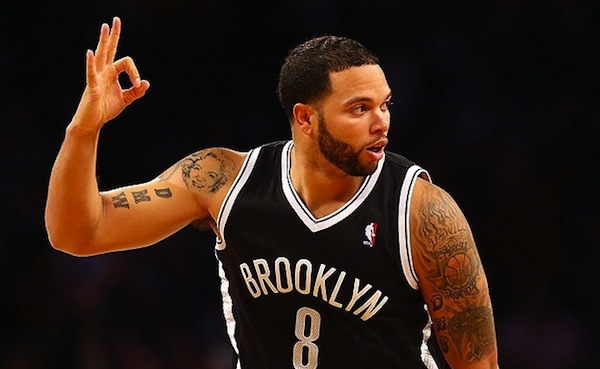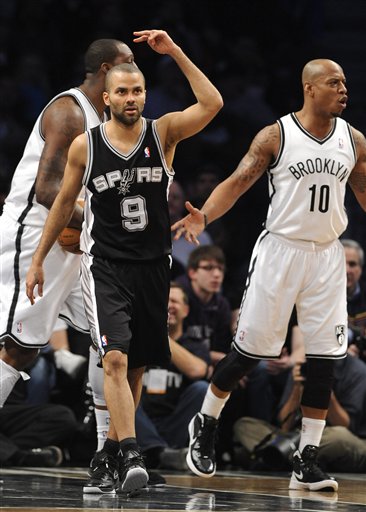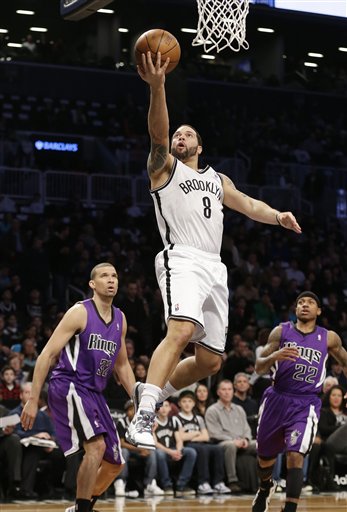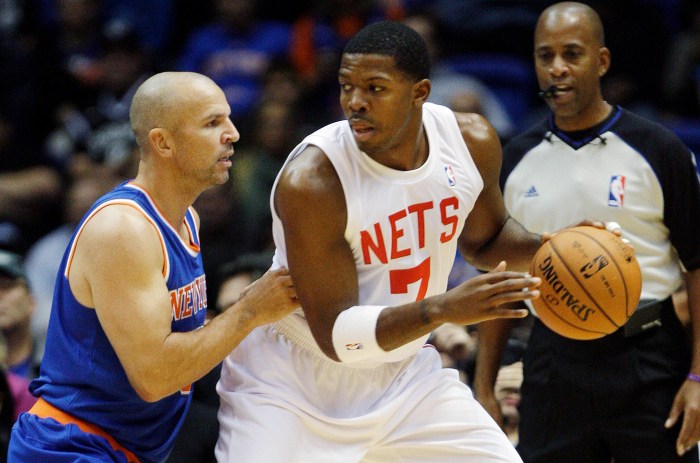As the Brooklyn Nets opened up their season last night vs. the Toronto Raptors, many continue to speculate how the on-court product will grow & evolve over the course of 82 games and beyond.
One such opportunity that I see is a spread pick-and-roll, a play made popular by Steve Nash and the Phoenix Suns and an offense that is gaining popularity across the NBA league wide.
Mike D’Antoni, the coach who lead those famous Suns teams, could be considered an offensive genius, but even a high school JV coach would take one look at the Nets roster and decide that his best offensive strategy would be to flip Deron Williams the ball and more or less “get out of the way.”
Nothing I’m going to write should be considered offensive innovation from a mastermind, but this offensive concept is being utilized more and more and it suits particular lineups of the Nets roster well.
As such, with almost any action that the Brooklyn Nets use this season, their best offense will probably come with the ball in Williams’ hands creating for others or himself. Why not put him in as many of these situations as possible, surrounded by teammates that will maximize his abilities?
This is where I believe a spread pick-and-roll could be an oft-used tool that pays huge dividends for the Brooklyn Nets this season. Here’s how it works.
The beauty of spread pick-and-rolls is in simplicity: A dynamic ball-handler in the middle of the court coming off a ball-screen and surrounded by shooters to allow for maximum spacing. Just imagine for a moment, a highball screen being set for Deron Williams with Kris Humphries acting as the screener/roll man and Joe Johnson, Gerald Wallace and Mirza Teletovic stretching the floor like three-point shooting yoga poses.
What’s a defense to do?
Ball-Screen:
Much like Steve Nash in his MVPing prime, Williams is such an effective PNR player because of his vision, but also because of his ability to score in the paint and from the perimeter. Go under the screen and Williams can shoot, go over and he’ll attack the paint, hedge and he can dribble split, etc. Ever the scientist, Williams has the antidote to almost any defensive poison thrown his way. And as you can see, guarding him alone takes an entire game plan and endless film study to stop.
But, with more talent around him this season, Williams needs not to force his own offense as much. Taking what the defense gives him becomes a valuable tool for Williams to employ in this situation and simply drawing secondary defenders to him like a magnet around paper clips is effective enough. Which leads to when the ball leaves Williams hands.
Roll Man:
What made the Suns so devastating during that era was not only the brilliance of Nash, but also Amar’e Stoudemire’s force as a roll man. The Brooklyn Nets’ most common screeners and roll-men (Humphries and Brook Lopez) is not in the same class as Stoudemire as a roller and in fact they are probably not even in the same school, but each is just competent enough as finishers to mitigate defensive attention. Hump’s body looks like it was genetically engineered to set screens and he’s mobile/athletic enough to roll hard or set multiple ball screens in a possession. He can finish above the rim, but is a notch or two below the most explosive finishers in the game.
Lopez’s style is slightly different from Humphries in the ways you would expect. Not quite as mobile as Humphries, Lopez’s sheer body mass draws the attention of the defense on his lumbering forays to the front of the rim. The added element to Lopez brings with his pick game is his ability to pop and hit a midrange shot and his deft touch also makes him a threat to slip his screen against an aggressive hedge.
Other screening options the Nets have are Reggie Evans (whom Sports Illustrated recently declared “The Pick Artist”) Andray Blatche or Mirza Teletovic.
Shooters/Floor Spacers:
The final element in a spread pick and roll set up are the players stretching the floor. The Brooklyn Nets are capable of putting out any combination of Joe Johnson, Gerald Wallace, Mirza Teletovic, MarShon Brooks and C.J. Watson. Each of these players is a threat to score from three, drawing their defenders further away from the hoop and puts a seed of doubt in their head when deciding to help.
Thus defenders are slower to react and more steps away from helping on Williams drives or rolls to the hoop. Drive and kicks are also good options, especially if Williams or the roller can suck in a second defender, even just a step or two, as a kick out to the perimeter will cause a closing out defender and allow for the Nets perimeter threats (especially Joe Johnson) to be able to attack a close out and either shoot or re-drive causing the cycle to repeat itself. This is superb offense to play from.
The possibilities for the Nets are endless. Think about swapping Joe Johnson and Deron Williams and allow Johnson to act as the primary ball-handler and Williams to be a shooter/attacker. Or, think about the development of MarShon Brooks and how he could lead the charge attacking off a ball-screen.
Throw in some dribble handoffs, transition drag screens (which SCREAM Lopez pick and pop) or side pick and rolls and suddenly you can see how the Nets base offense could be simplistic yet utterly complex at the same time.
But let’s not get ahead of ourselves. As the Brooklyn Nets begin their first professional season with Brooklyn across their chest, all we can ask for is an offense that flows and takes advantage of our best players’ skills.
Spread pick and rolls may be a good place to start.



















